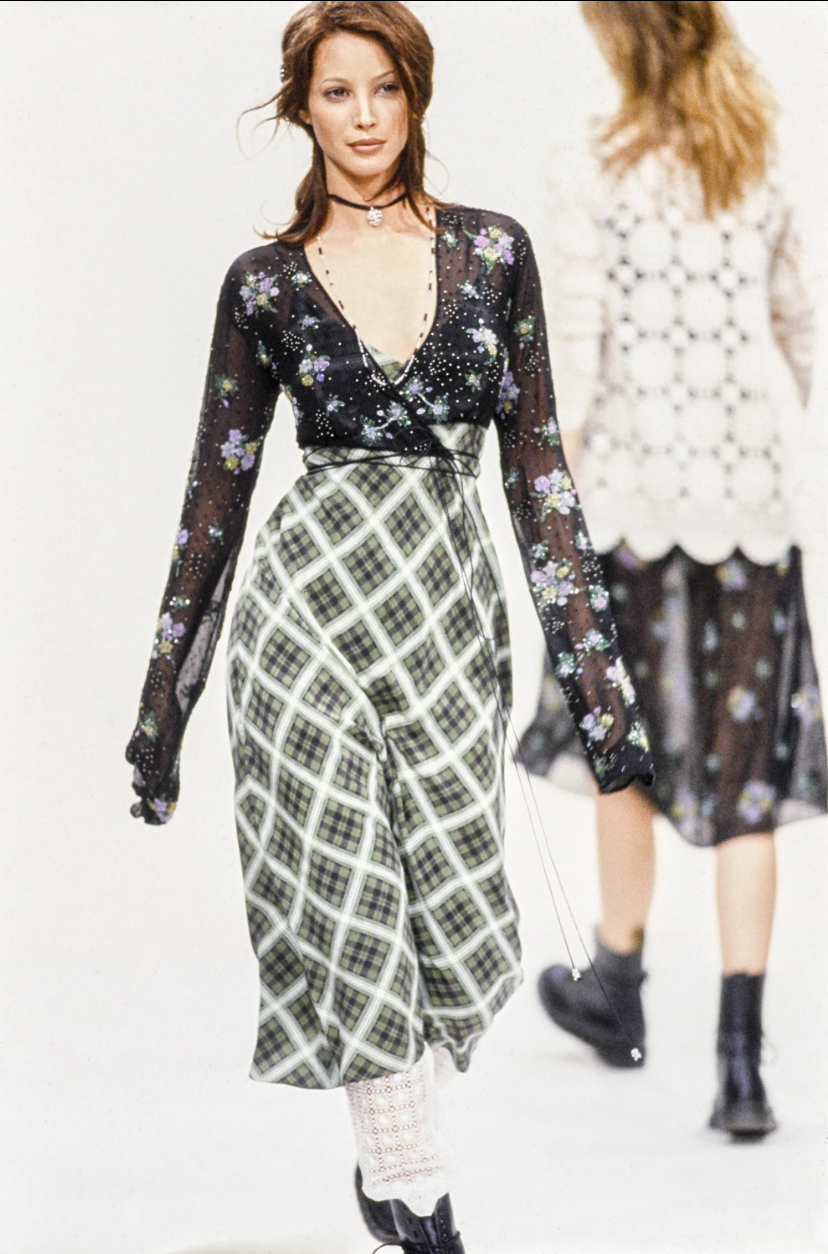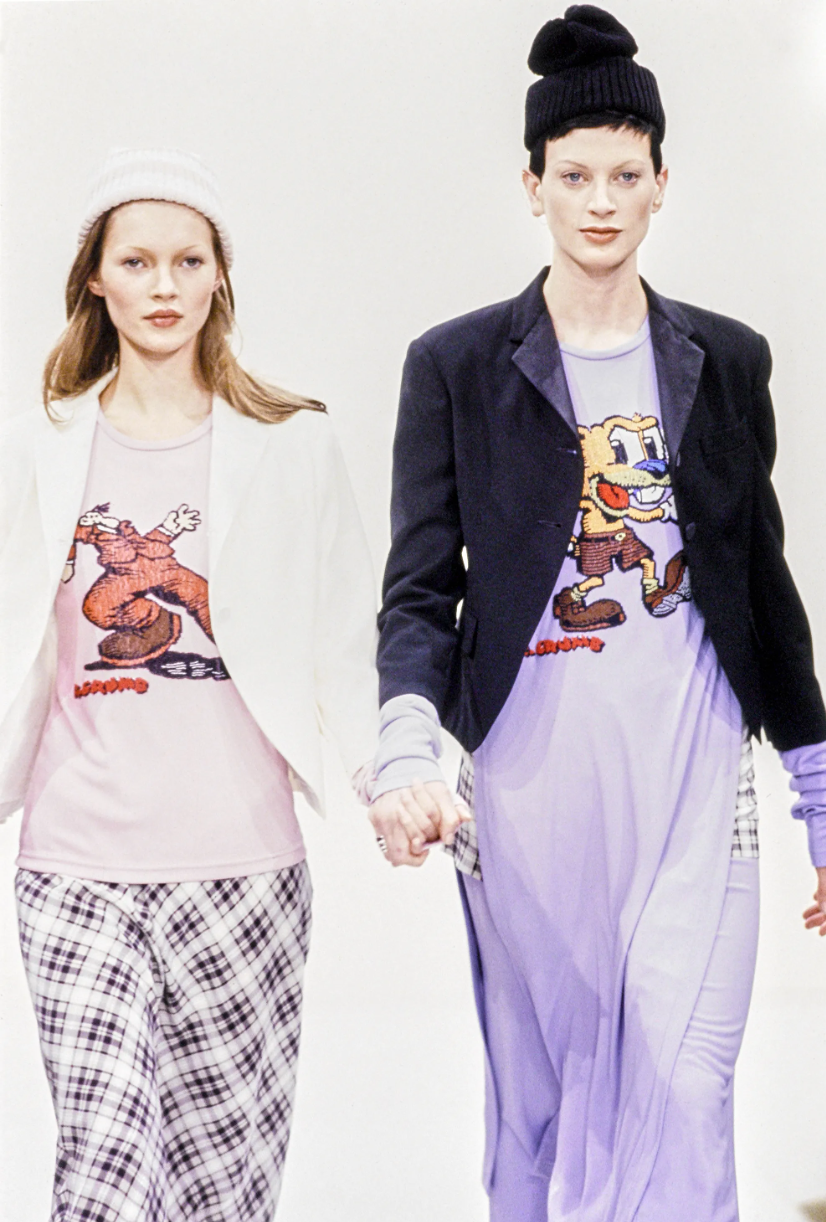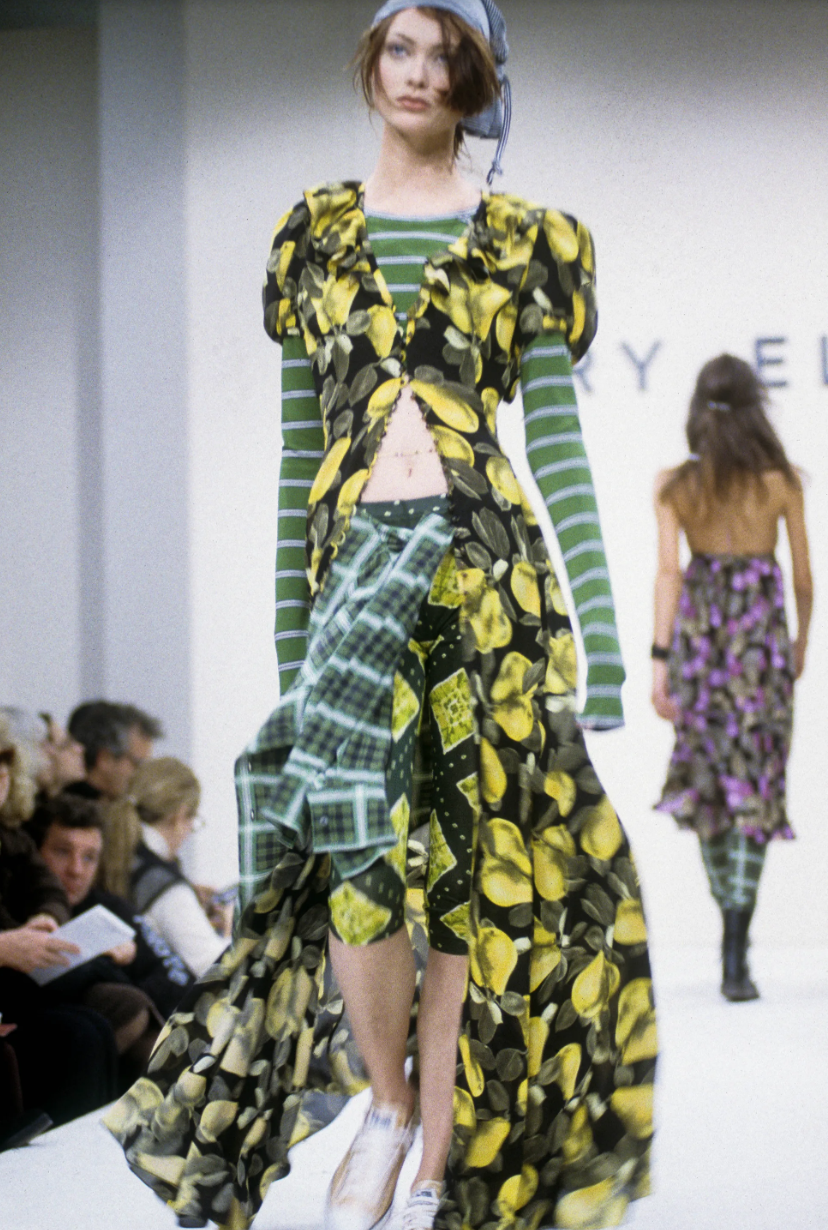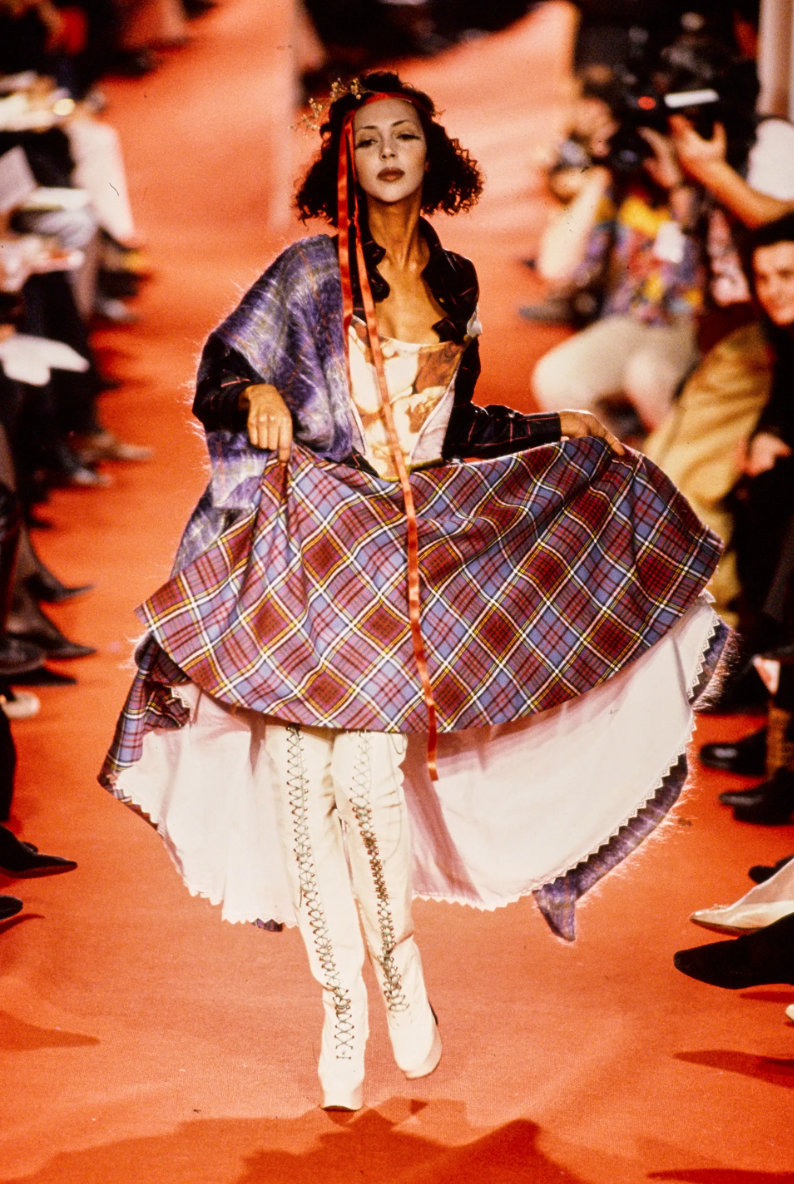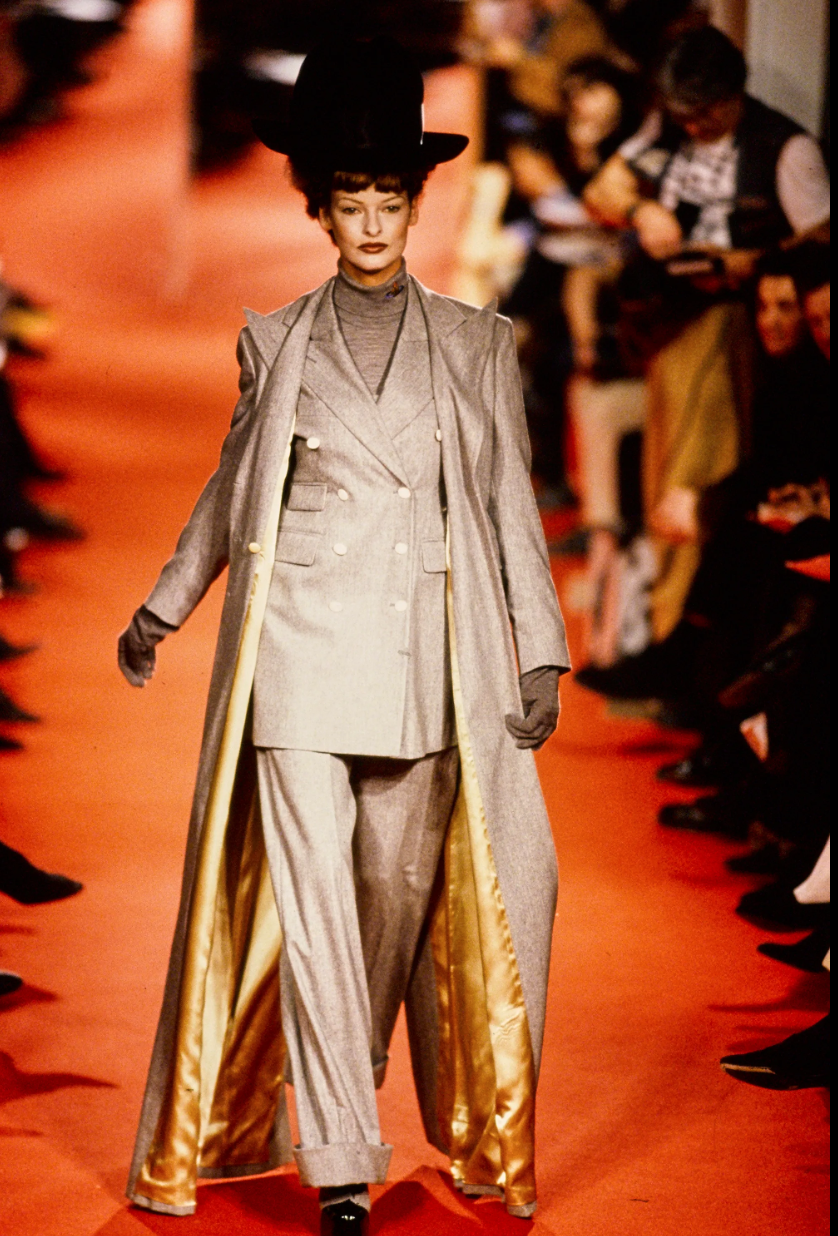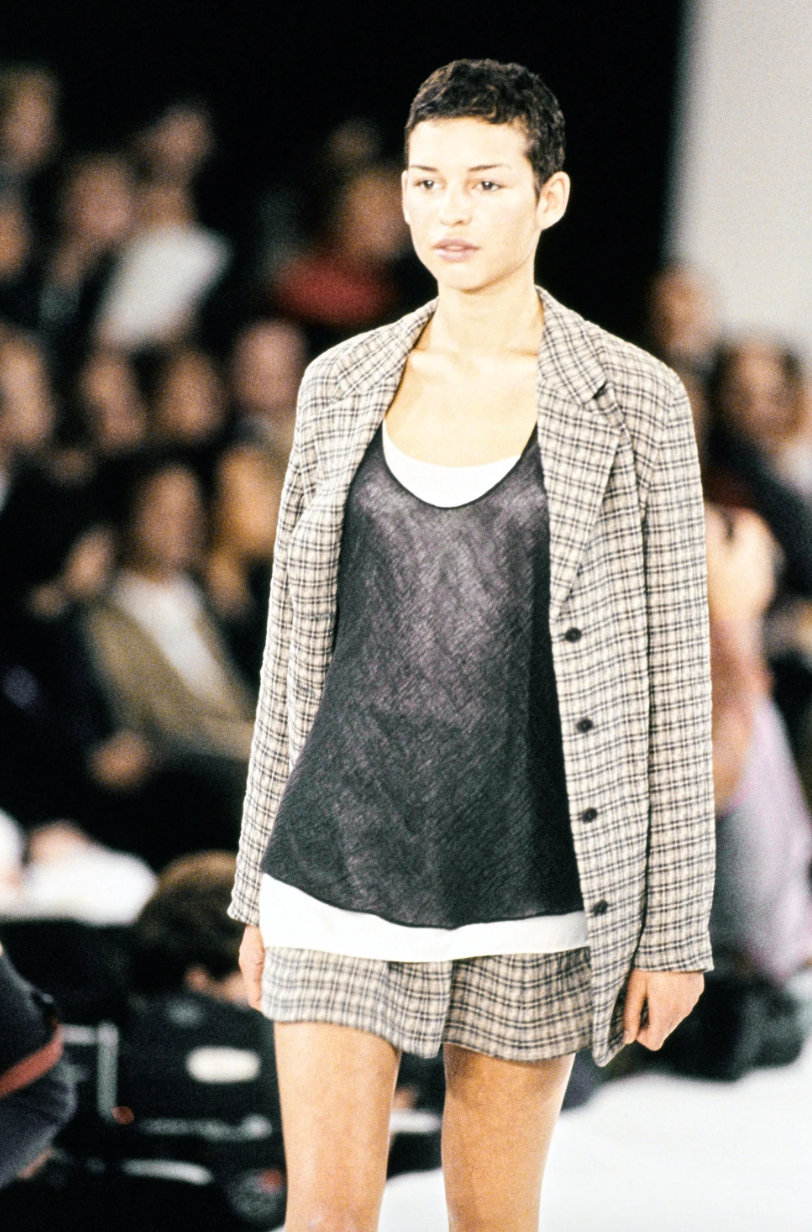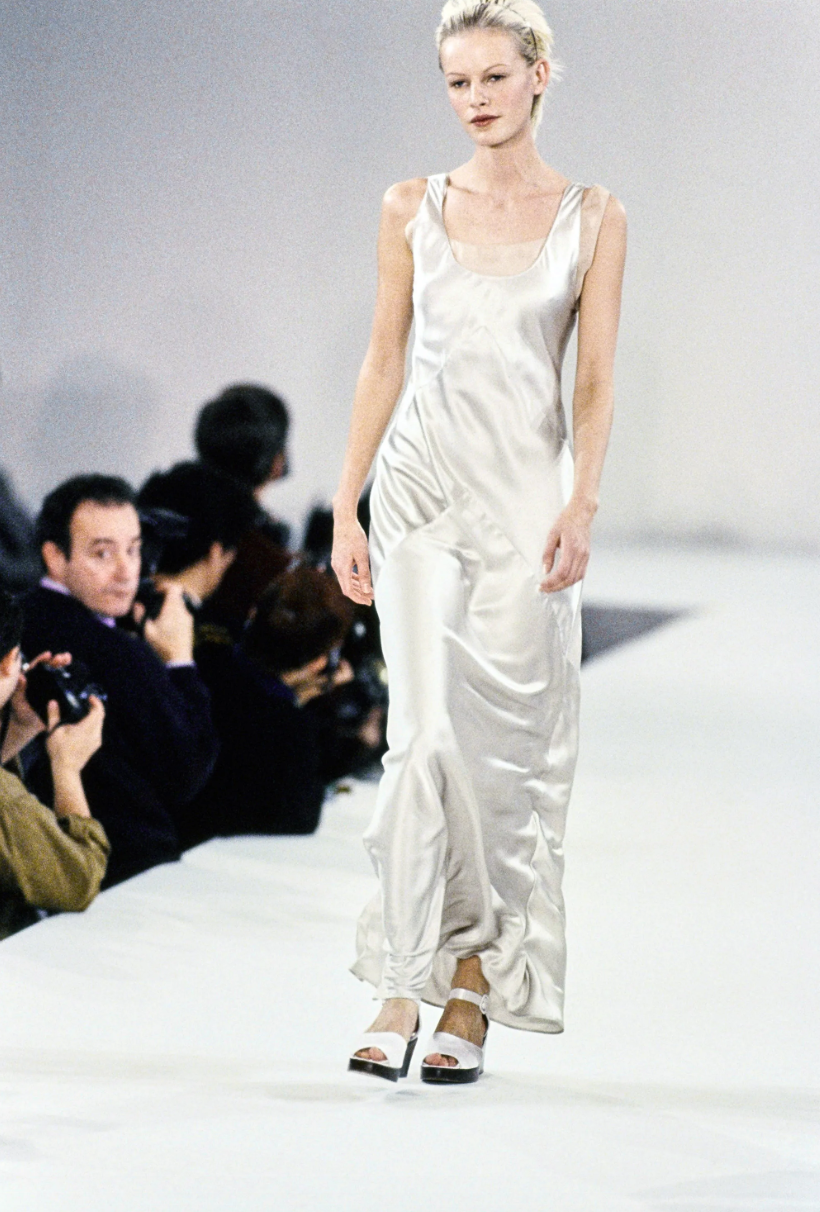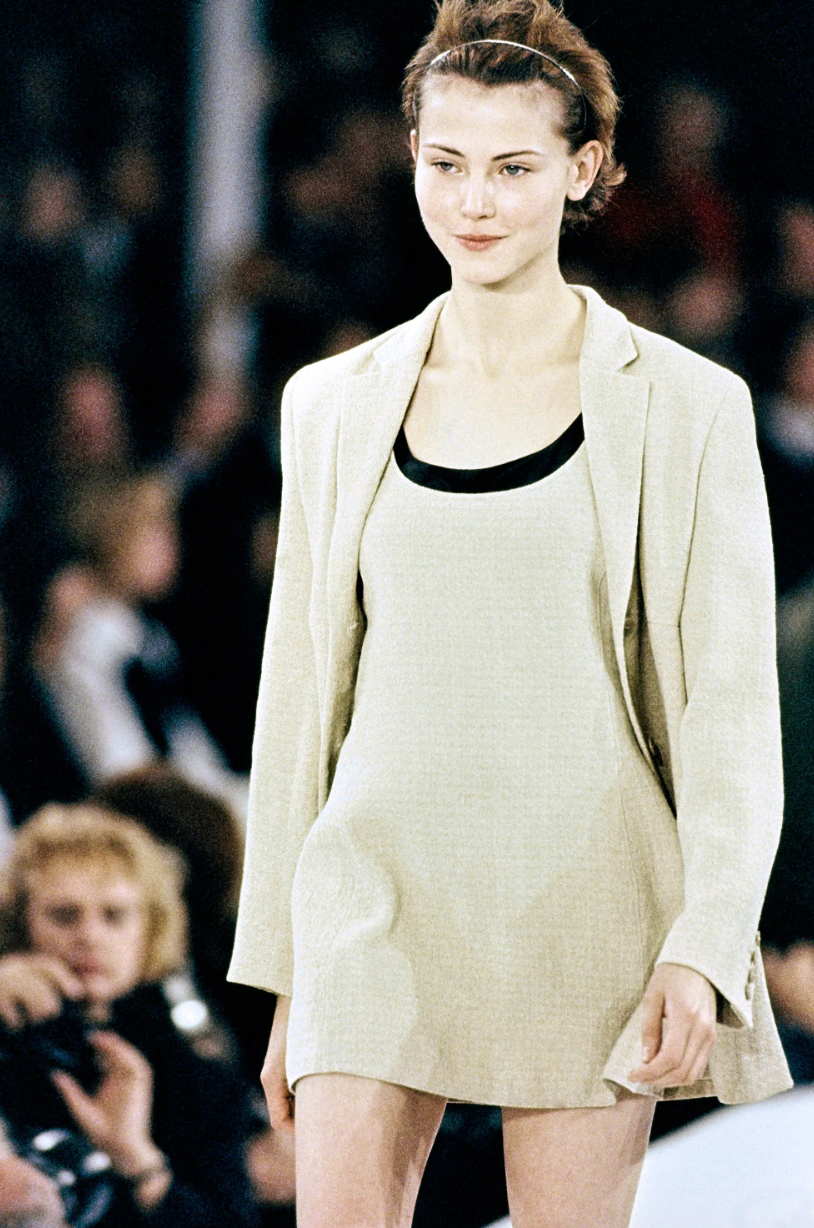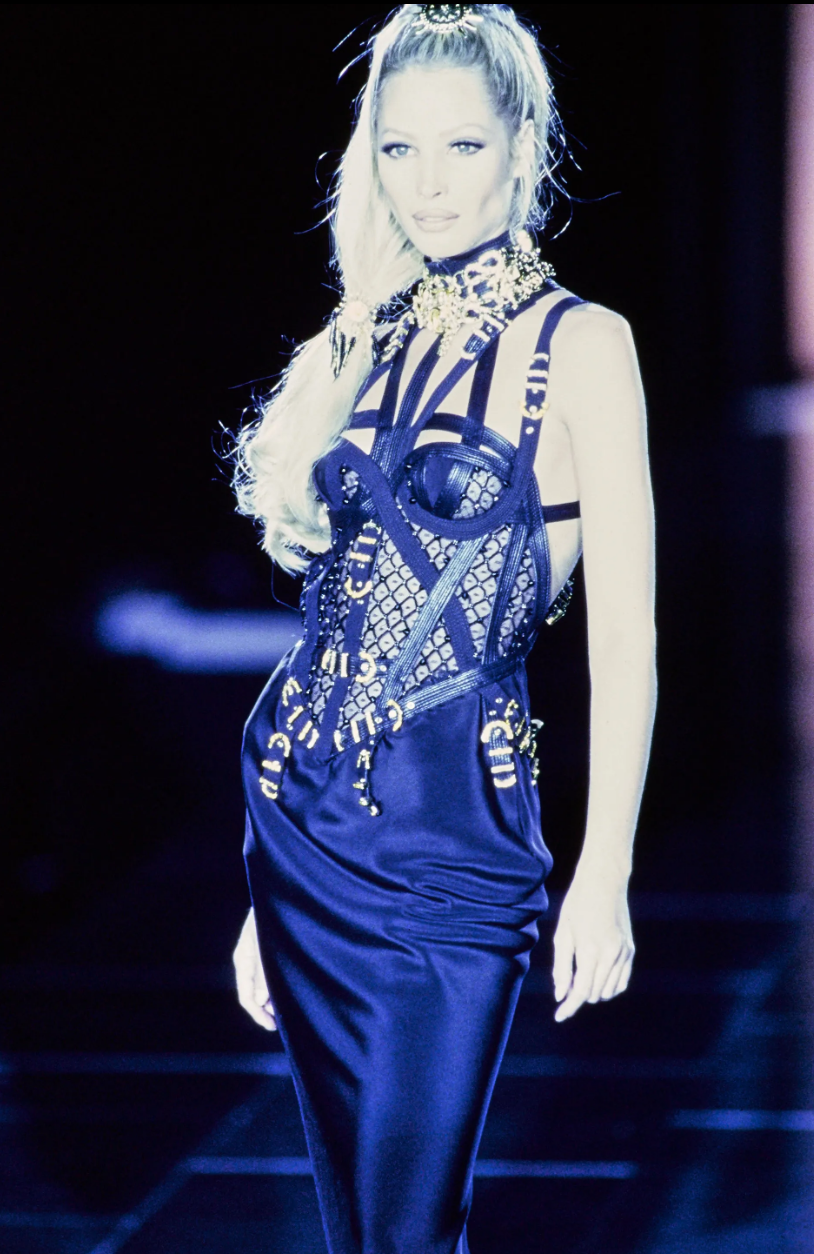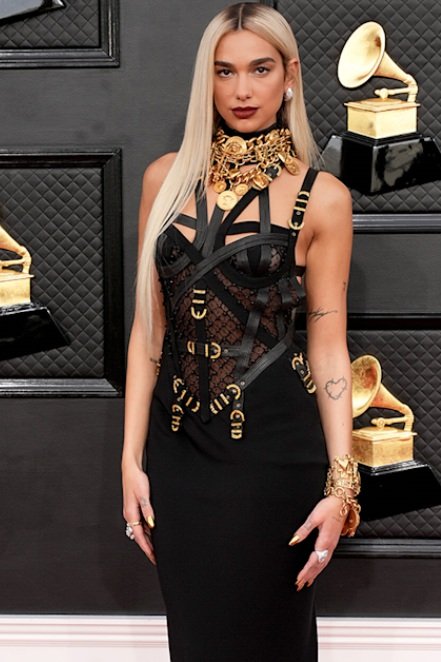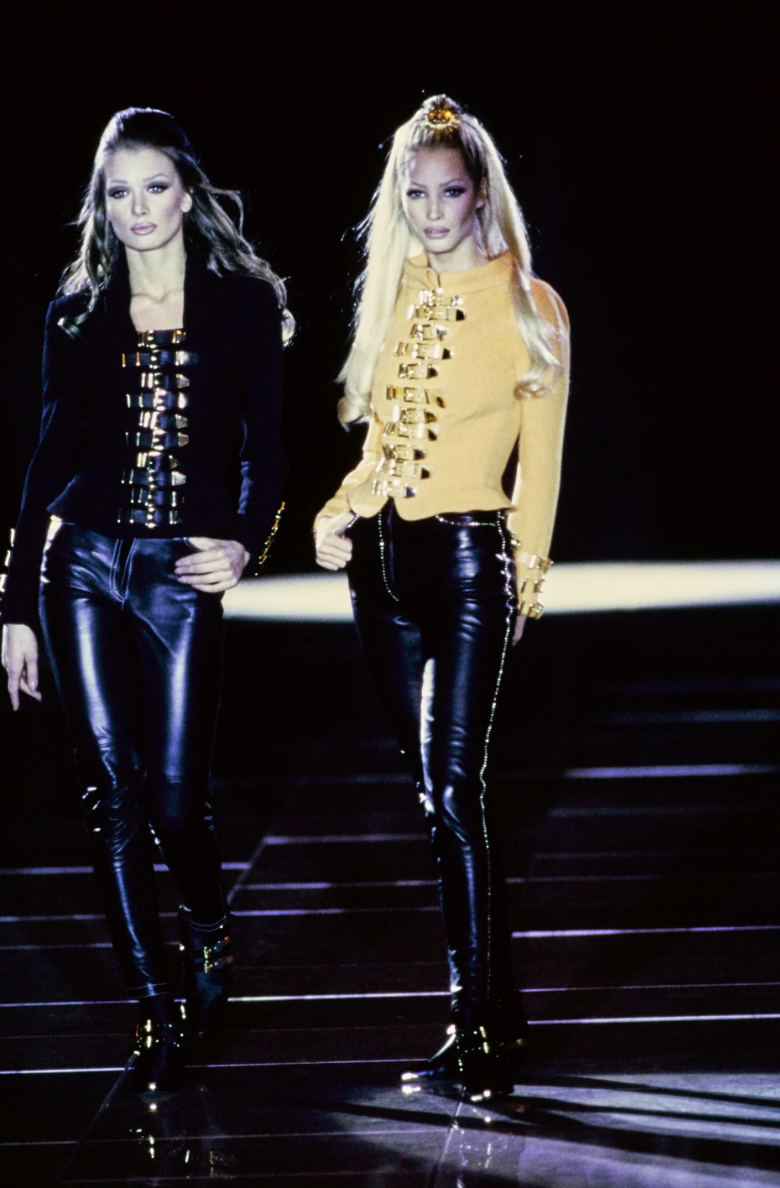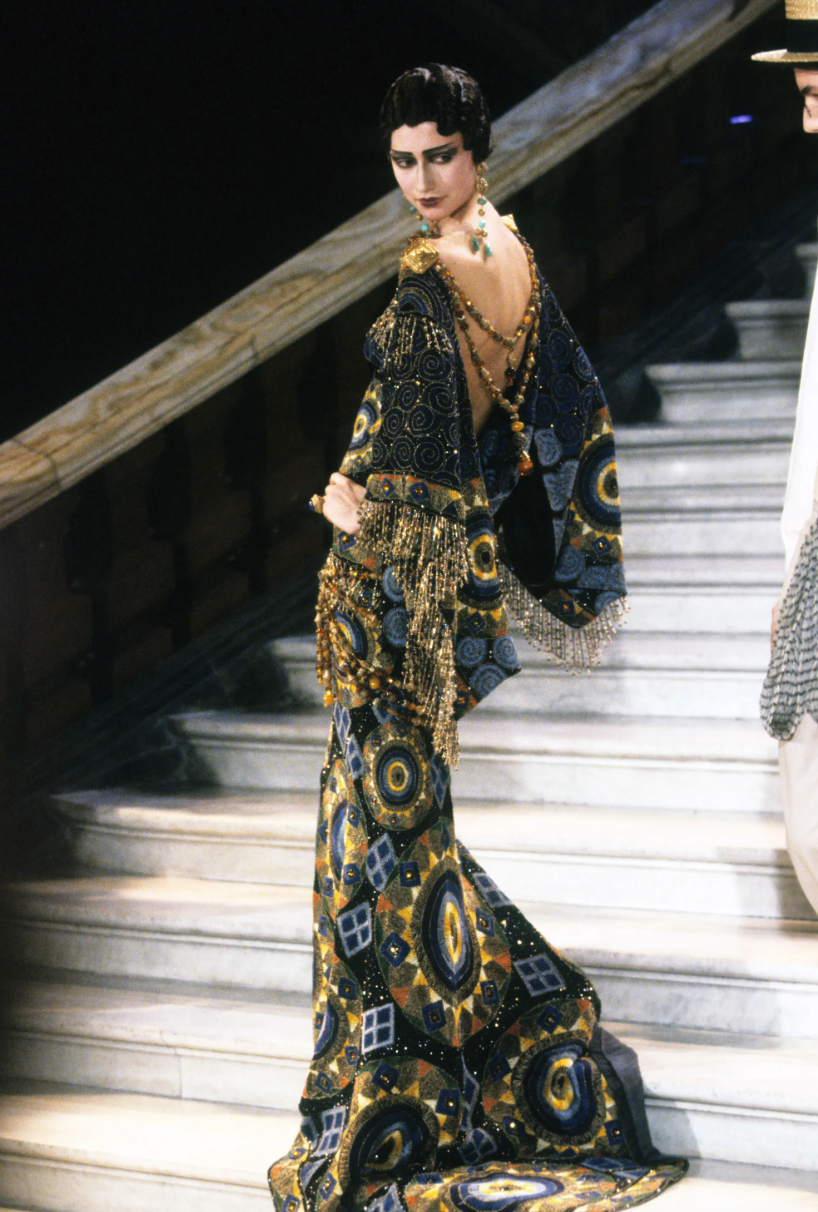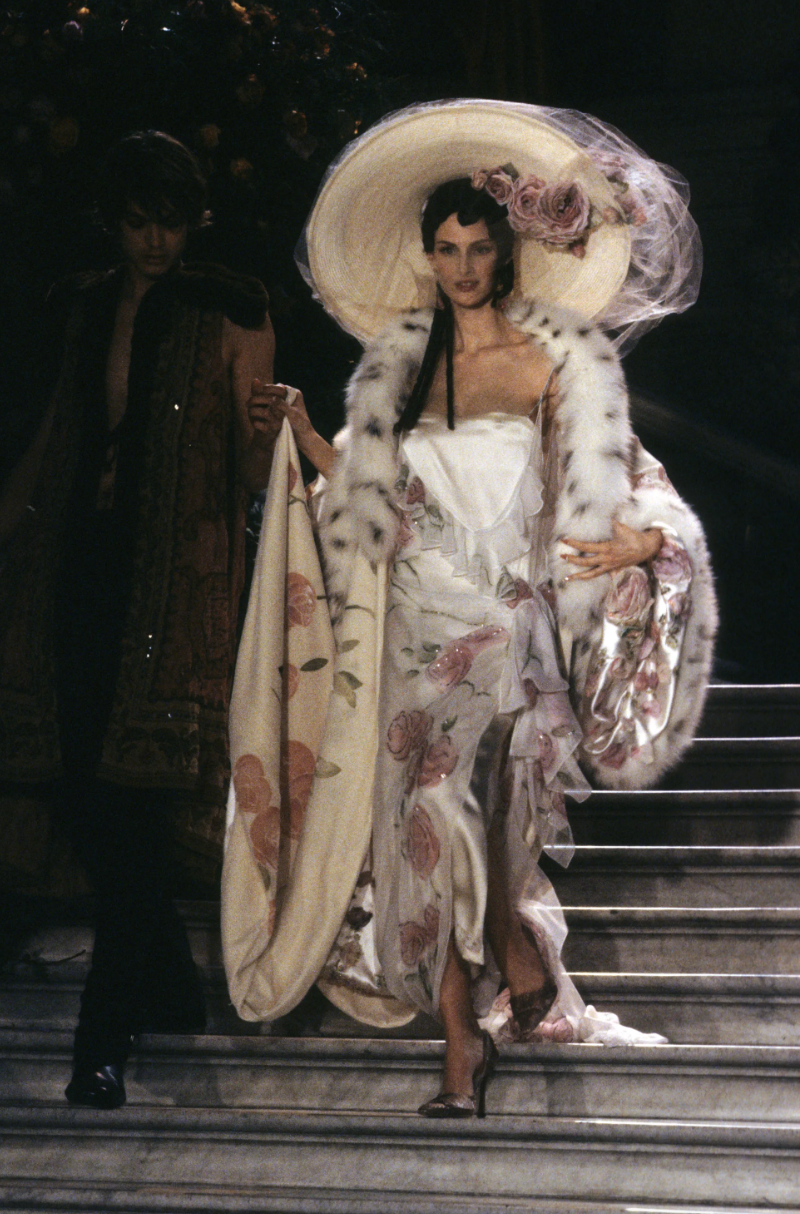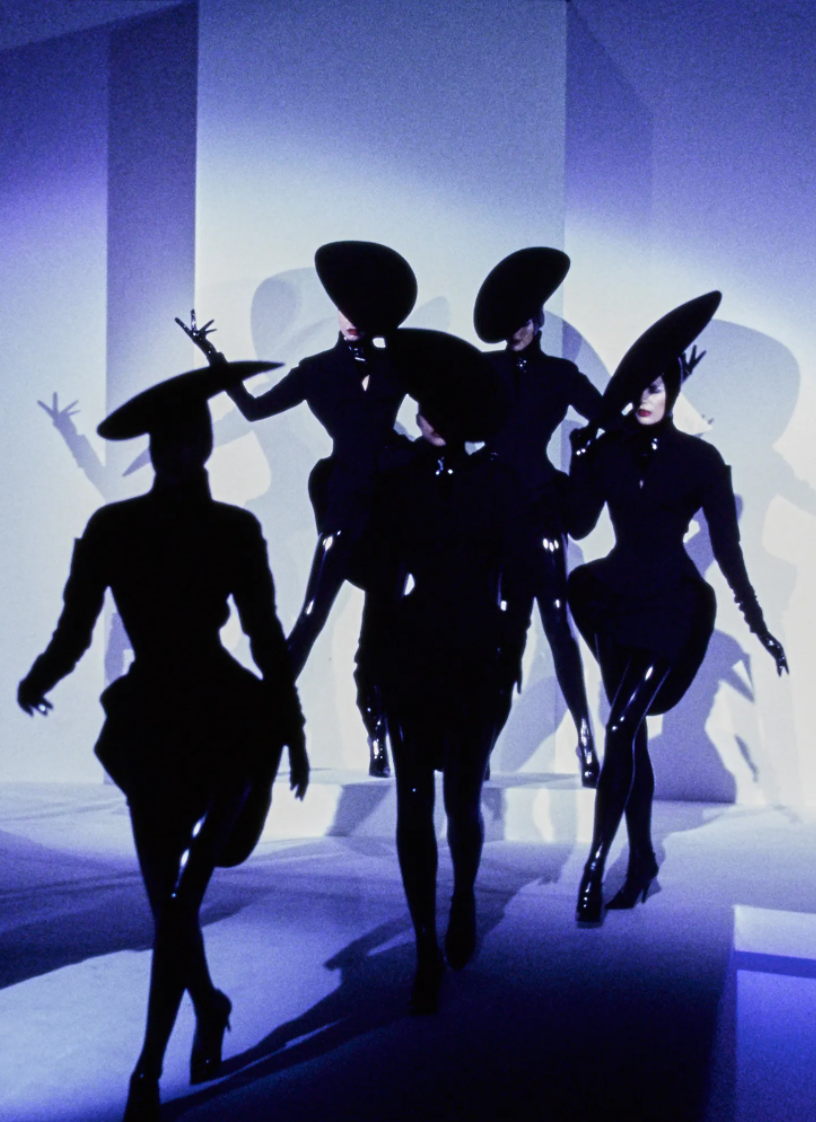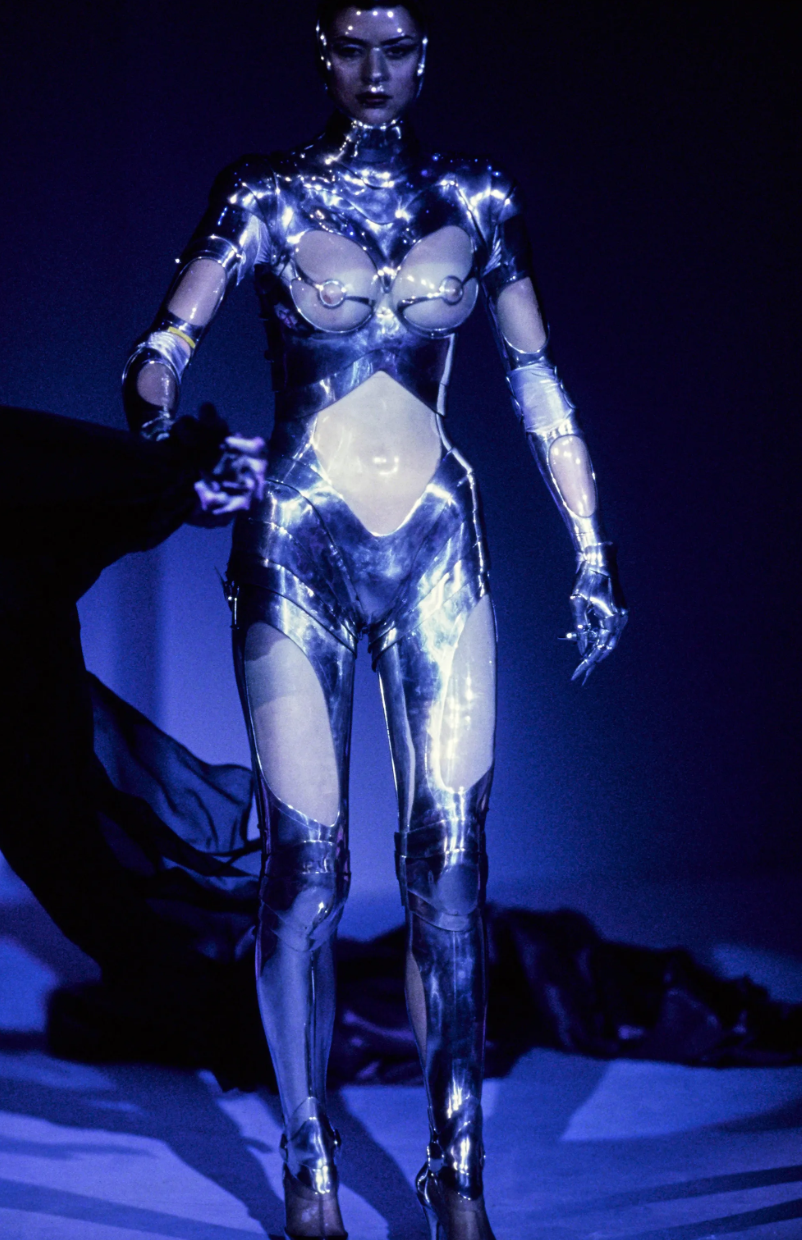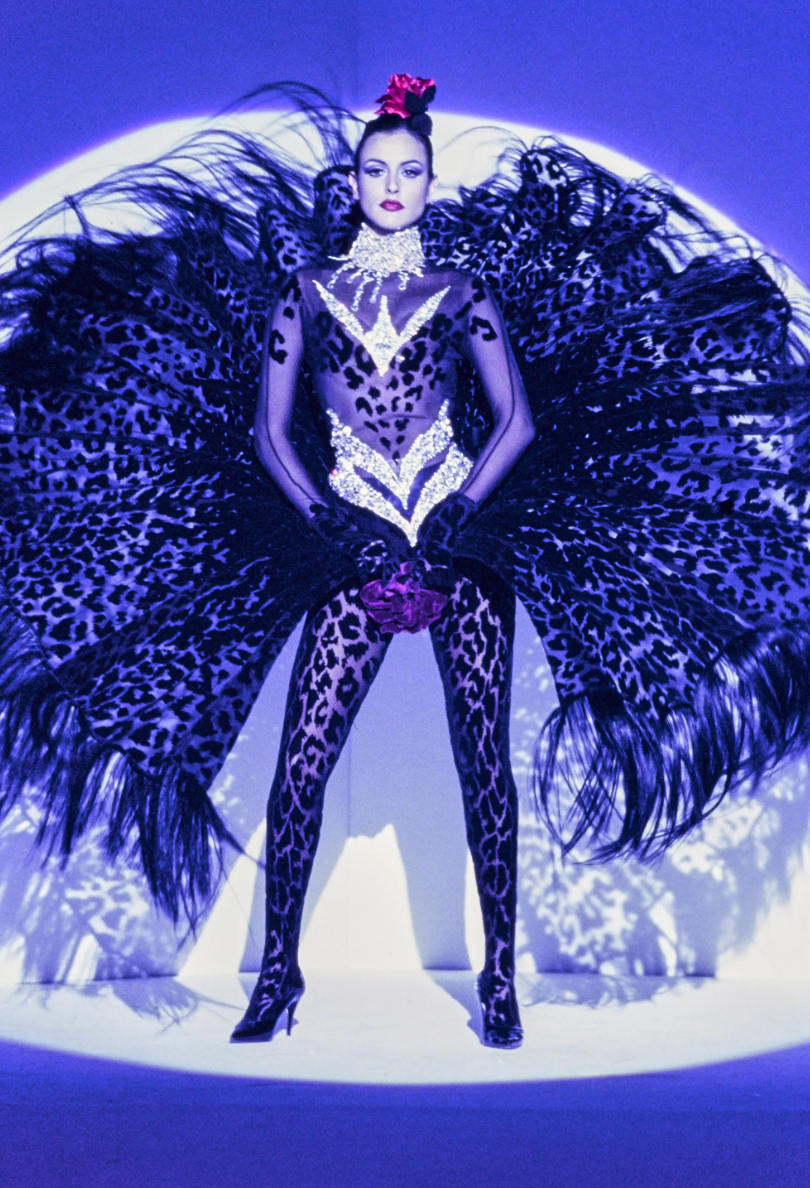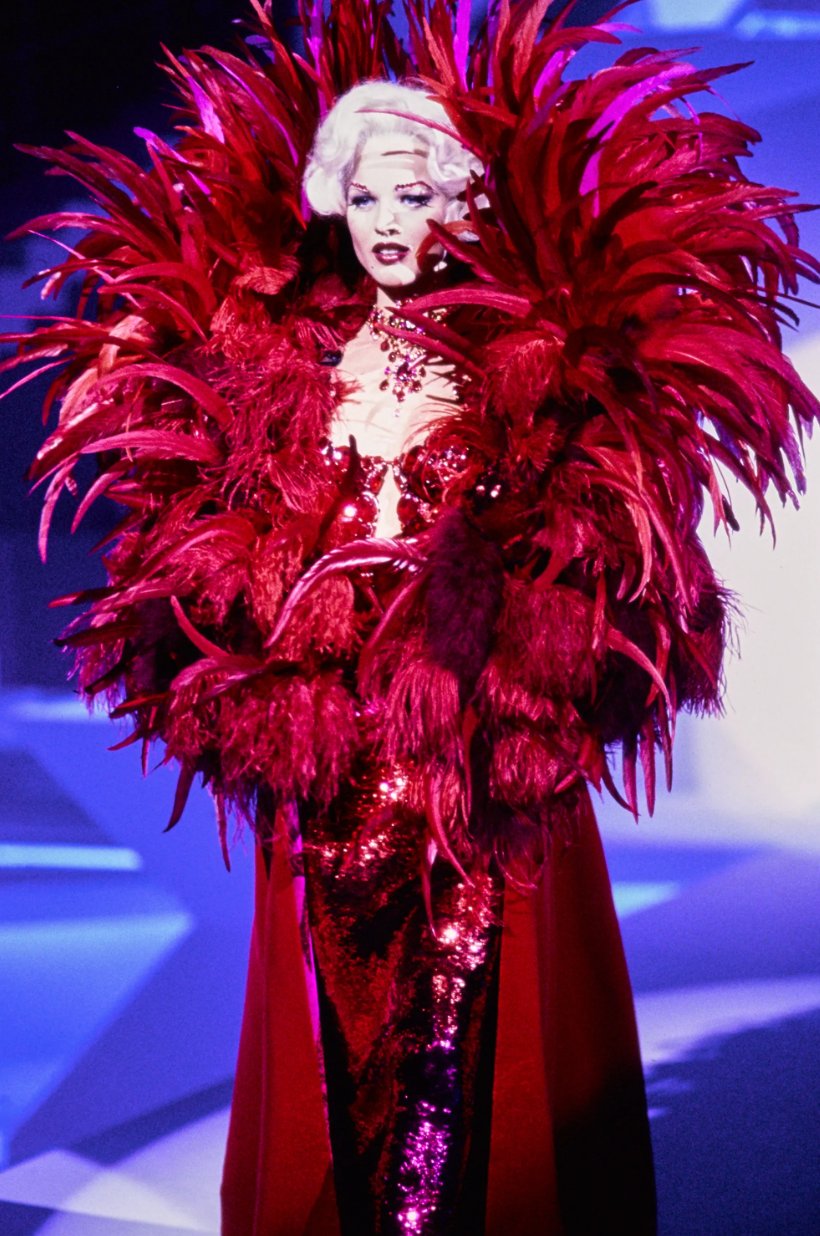Rewriting the Rules: The ’90s on the Runway
Amid the rapid technological advancements of the ’80s and ’90s and the resulting increase in pop culture’s prevalence, fashion entered a new, unforgettable age. Boundary-breaking collections of the ’90s reached a status of iconography: they outfitted a new generation of stars, faced the public eye as they never had before, set trends that live on in our favorite television shows and movies, and celebrated non-conformity.
Following the bold styles of the ’80s, known for power dressing and prep, fashion took a hard turn toward casual in the ’90s. Grunge and punk were in style, minimalism was on the rise, and a new generation of supermodels popularized the unkempt-meets-chic aesthetic. These changes were largely spurred by the following legendary collections.
Perry Ellis SS 1993
This grunge collection, famously known for getting Marc Jacobs fired from Perry Ellis, was inspired by Seattle streetwear and the thrifted fashion worn on the city’s thriving music scene. The collection shocked and even disappointed some in the fashion world with its lack of convention –– grunge was not “high fashion,” but it was undeniably cool. Jacobs quickly became acclaimed for the cultural relevance of his collections, a staple in his designs ever since this memorable debut. In 2011, Jacobs said the collection “was about a sensibility and also about a dismissal of everything that one was told was beautiful, correct, glamorous, sexy.”
Nearly 30 years later, the collection is still visible in the trend cycle. Long plaid skirts with chunky black boots, dresses and tees layered over striped long sleeve shirts, flannels and beanies — they’re some of the most trendy pieces of the past couple of years.
Vivienne Westwood FW 1993
Vivienne Westwood’s 1993 collection showcased her taste for the intersection of punk and femininity: plaid evening gowns, tailored pantsuits, flamboyant fur coats, and eccentric spins on menswear. Titled Anglomania, the collection debuted an aesthetic that was characteristic of Westwood’s designs for the rest of the decade –– a combination of English tailoring and French fashion’s flair for exaggerated proportions. While the reference is apparent in the feathered top hats, ruffled button-downs and monarch-esque hairstyles, Westwood’s infusion of punk and grunge left a new mark of its own on the fashion world.
Calvin Klein SS 1994
Calvin Klein’s 1994 spring collection showcased a signature style of the decade: minimalism. This monochromatic collection featured silk slip dresses, wide-strap tank tops with trousers, dresses over T-shirts and matching skirt suits. Suit jackets with shoulder pads brought in oversized, casual and masculine elements, contrasting with the feminine and delicate maxi dresses and mini skirts. The collection resembles the model-off-duty look of the decade, making it seem as if the models could go straight from the runway to the afterparty.
Miss S&M – Versace 1992
No ’90s collection shocked and delighted the fashion world quite like Gianni Versace’s 1992 BDSM-inspired collection. Models sported military and utility wear with leather, chains and straps intricately wrapping around their bodies. Gold accents shone against the black leather, the predominant textile in the collection.
The sexually explicit nature of the collection was polarizing to some critics, but the collection has lived on in infamy. Decades later, pieces are still being pulled from the archives for celebrities including Naomi Campbell, Kim Kardashian, and Kaia Gerber to wear on the red carpet. Christy Turlington modeled one of the most famous looks –– an evening gown featuring bondage-inspired straps and adorned with layered gold necklaces –– which met the public eye again when Dua Lipa wore it to the Grammy Awards this year.
Christian Dior 1998
The Opéra Garnier in Paris looked even more opulent than usual as models wore John Galliano’s designs down its steps. The elaborately draped gowns, gilded fabrics, oversized headwear and fur-trimmed opera coats made for a spectacle that embodied luxury. Every ensemble glittered and shone, down to the slicked hair of the models in 1920s finger waves fashion.
Famed for his theatricality, this collection is trademark Galliano. Closing by showering the audience with tiny paper butterflies, the sensational nature of the show has solidified its place among the ranks of iconic collections of the decade.
Thierry Mugler FW 1995
It’s impossible to talk about boundary-breaking collections without mentioning Thierry Mugler's 1995 Haute Couture show. Dubbed “the Woodstock of Fashion,” Mugler’s legendary collection can only be described as otherworldly. Each of the 300 pieces was extravagant: dramatic silhouettes, exaggerated bodily proportions, hats of all sizes at sharp angles, and feathers, jewels and patent leather. The show opened with a series of skirt suits in black and white, but things quickly took a turn for the flamboyant. Models paraded in large fur capes with brightly colored linings, swaths of leopard print fabric that fanned out like peacock feathers, and ensembles dripping with pearls. One model wore a gargantuan wreath of ruby red feathers around her jeweled evening gown. Another sported a bodysuit resembling a cyborg.
Picking the most memorable look out of the lineup is a formidable challenge, but one in particular stands out: The Birth of Venus Ensemble. It’s a black and pink satin skirt that fans out to look like a clamshell, revealing a model outfitted in a pearlescent bodysuit and gloves. It recently got a second showing on the red carpet when Cardi B wore it to the Grammys in 2019.
Images courtesy of Vogue Runway

